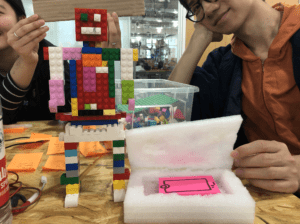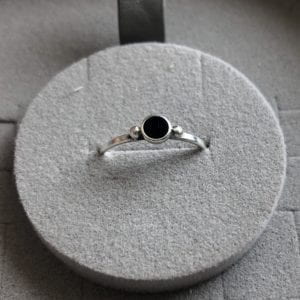I think that all of the three readings assigned for this week provide an excellent introduction to the complexity of the design process. In her piece about mapping out design research, Liz Sanders’ divides each map into four parts: Design Led, Expert Mindset, Participatory Mindset, and Research-Led. This reading provides a clear explanation of how complex design is and introduces many different kinds of design. As most people view design as an abstract and rather undefined process, this reading serves as an eye-opener as to how many kinds of design there are out there. I think that Liz’s mapping practice can be useful and applicable to many other fields (not necessarily design-related) as her method of presenting information is particularly clear and easy to understand. In fact, her article about an evolving map of design could be considered as an example of good design. Richard Buchanan’s and Jasper Liu’s articles both refer to the Design Thinking process. While Jasper’s article describes the iterative Design Thinking process, Buchanan’s article provided more context as to what is Design Thinking. I think that these two readings describe the ideas of the d.school very clearly. After reading the articles, I understand that Design Thinking is an iterative process which should include a diverse team which uses empathy to design different products and services. The Design Thinking process can be applied to any disciple as it utilizes design tools and techniques which help a team communicate and plan better. I really appreciate the definition of design provided by Richard Buchanan in which he describes the design as: “communication, construction, strategic planning, and systemic integration” (Buchanan, 20). I think that his message is essential as it clearly explains that an excellent design will rarely be a product of a linear process and of a homogenous team. Based on my internship, work experiences and conversations with peers, I see that the articles assigned for this week could be beneficial in many companies which still use inefficient design processes without fully understanding that a design process does not need to be undefined and disorganized.
Week 1: in-class activity /Gabriela N./
My team (Team 3) designed a product for Fellow Nick whose main issue is that he always checks his phone while being in bed. In the interview, Nick mentions that he would like to spend less time on his phone as he currently needs one additional external battery to make sure his phone will not die during the day. So, at the beginning of the session, my team reached a conclusion that we needed to design a product which would prevent Nick from becoming increasingly addicted to his late-night phone use. Therefore, we decided to create a personalized product aiming to help Nick unlearn checking for updates in bed. “Nick’s box,” as we called it, constitutes of an AI robot (robot because Nick is a huge fan of robots) which guards a box where Nick is supposed to place his phone before bed to charge it. If Nick decides that he wants his phone, he needs to ask for permission providing the robot with a reason. The robot, being an AI, assesses the extent to which such phone use is necessary and may provide a sassy response reminding Nick about the pointlessness of his decision to browse in bed. On the other hand, if Nick needs to use his phone due to an emergency, the box is going to open instantly. Of course, this is just a prototype but, if such a project was to come to life, it would be imperative to make sure that the user would have immediate phone access in case of an emergency.

“Good design” /Gabriela N./
My mom gave me the ring shown in the photo when I was around 6 years old. She had kept it for years as it was a gift she received from her American friend at the age of twelve. I have been wearing it ever since. In my mind, it represents a perfect design. Not only because I feel stronger and more confident whenever I look at it, but also because it is a simple design. It is a thin silver ring with a little black dot adorned by two smaller silver spheres. I love it. I can wear it with anything because its design matches every outfit. I don’t have to worry about losing it while washing my hands because it fits perfectly well. It’s not too big or too small – it’s just right. It’s a perfect ring – it doesn’t disturb my workflow because of its sleek design, in fact – I don’t even notice it much when I wear it. But then, when I catch a glimpse of it, it makes me feel elegant and confident in its own minimalistic way.
